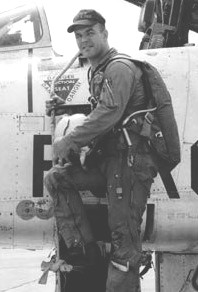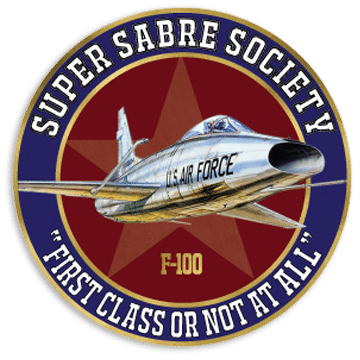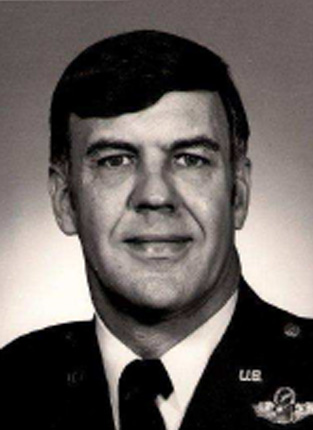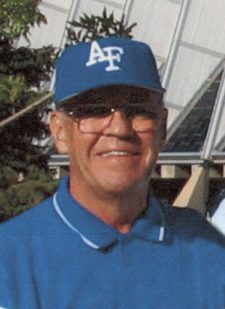Ron Barker’s Flying Story
I believe I may be the last pilot to fly with the F-100 Buddy Refueling System.
It was in the spring of ‘64. At Misawa, we had an exchange program with the soldiers in Korea called “Operation Teamwork,” for which I was the project officer working out of the O&T shop at 39th Air Division. We would send a dozen or so pilots to Korea, where we got to play soldier, drive tanks and fire artillery, etc. In turn, the soldiers would come to Misawa, receive a few briefings, do some serious partying and most would get a ride in an F-100. The grand finale was a firepower demonstration on Ripsaw Range.
We had heard that there was a complete Buddy Refueling rig on the base. None of us had seen it or knew much about it. There was a one-liner in the Dash One that mentioned the capability existed, but everything else was in a separate Tech Order. I suggested that we really impress our grunt friends by flying with it during the firepower demonstration. The request was approved, and we pulled the Buddy System out of its dusty storage.
What I remember about the system is that there were two main components: a huge, 600+ gallon fuel tank for the right wing, resembling a small Japanese submarine, and a somewhat smaller sized tank on the left wing which contained the hose and drogue, a propeller-driven hydraulic pump and maybe another 300 gallons of fuel. The simple control panel went between your legs where the nuclear weapons panel normally was. As I recall, the only switches were: a power switch that started the propeller-driven pump, a second switch to trail the hose and another to begin refueling.
I was selected to fly the mission with the Buddy Refueling rig installed on an F-100F. I think Bill Woods was in my back seat, but I don’t remember who the receiver pilot was. The plan was to fly with the tanks empty, deploy the hose, and fly by the grandstand with the receiver flying close behind the drogue, but not connected.
During my walk around, I tapped the 600+ gallon tank with my ring. It didn’t sound empty! I said to the crew chief, “This thing is empty, isn’t it?” He confidently responded, “No sir! I filled it myself, both sides.”
I called squadron ops to inform them of the situation. After a pregnant pause, I was told to proceed with the mission, but to standby for some new takeoff data. After receiving new takeoff data, we taxied out. Taking off to the west, we eased our pregnant beauty into the air. A gradual right 180-degree turn took us back toward the ocean.
Near as I recall, we climbed to about 2,000 feet but kept our airspeed down to about 220 knots, the maximum deployment airspeed for launching the drogue. As we passed the coast, I got a quick check-over by my wingman and went straight to the checklist. When I turned on the power switch, I heard the pump propeller whirling up. And then I flipped the switch to trail the hose. Watching in my mirror, I saw the drogue come out of the tank housing. It went back briefly, then it bumped the horizontal stabilizer and dropped down below it.
At almost the same moment, we experienced a huge thump and looked out to see the entire refueling tank assembly plummet into the ocean. Now, I’m at 220 knots with a clean left wing and a 600+ gallon tank on the other side, the Hun rolling smartly to the right. I let the aircraft roll while beginning a shallow dive to pick up some airspeed. I finally got enough aileron/rudder control to level the wings. I did not jettison the tank but was certainly ready to do so.
The second guessers concluded that when the drogue contacted the slab, static electricity went up through the hose and fired the store jettison cartridges; thus proving the old adage, “If anything can go wrong, you can count on it going wrong.”
Many other birds ran into problems that morning and there were only a few aircraft left for the traditional final fly by. Therefore, I was told to join up with the remaining fighters for the final pass. It must have been quite a sight to behold.
Les Leavoy was my Ops Officer. Maybe he can remember more of the story.
Biography
A native of Lansing, Michigan, Colonel Barker received his commission through the Air Force ROTC program in 1956. His first assignments were as an F-100 pilot at Cannon AFB, NM, and Misawa AB, Japan. He later served as an Air Officer Commanding at the Air Force Academy. He served a combat tour in Vietnam from December 1965 to December 1966. During this tour, he served both as an F-100 pilot and as a Forward Air Controller with the Army’s First Cavalry Division. He has over 250 combat missions and over 400 hours of combat flying time.
Following his SEA tour, Colonel Barker graduated from the Air Force Institute of Technology and was assigned to the Air Training Command Resident Office as a liaison officer to the Aeronautical Systems Division. His program responsibilities included F-15, B-1, and A-10 aircraft and all developmental life support systems and equipment. Next, he attended the United Kingdom Joint Services Staff College near London, England. Immediately following his school assignment, Barker transferred to RAF Upper Heyford where he began flying the F-111 as initial cadre in the 55th Tactical Fighter Squadron.
Early in 1974, he transferred to Korat RTAFB, Thailand, as the Wing Quality Control Officer. He was selected to become Operations Officer for the 429th Tactical Fighter Squadron “Black Falcons” and in January 1975, was selected to be the commander. The 429th TFS returned to Nellis AFB in June 1975.
His promotion to Colonel led to an assignment to the 86th Tactical Fighter Wing, Ramstein AB, Germany. In April 1978, Colonel Barker was named Commander of the 86th Combat Support Group. He remained Base Commander until March of 1970 when he returned to flying as Commander of the 86th Tactical Fighter Group, flying the F-4E.
In January of 1980, Barker left Germany for assignment to Ft. Leavenworth, KS as Commander of the Tactical Air Command Liaison Office.
He was assigned to Headquarters Pacific Air Forces (HQ PACAF) as the Director of Support Operations from May 31, 1983, until his retirement on May 31, 1986.
At retirement, Colonel Barker was awarded the Legion of Merit for Exceptionally Meritorious Conduct in the performance of outstanding services.
Ronald L. Barker Col USAF, Ret, from Tucson Arizona, Headed West on 17 April 2022.

Ronald L. Barker Col USAF, Ret. (December 24, 1933- April 17, 2022).
A native of Lansing, Michigan, Colonel Barker received his commission through the Air Force ROTC program in 1956. His first assignments were as an F-100 pilot at Cannon AFB, NM, and Misawa AB, Japan. He later served as an Air Officer Commanding at the Air Force Academy. He served a combat tour in Vietnam from December 1965 to December 1966. During this tour, he served both as an F-100 pilot and as a Forward Air Controller with the Army’s First Cavalry Division. He has over 250 combat missions and over 400 hours of combat flying time.
Following his SEA tour, Colonel Barker graduated from the Air Force Institute of Technology and was assigned to the Air Training Command Resident Office as a liaison officer to the Aeronautical Systems Division. His program responsibilities included F-15, B-1, and A-10 aircraft and all developmental life support systems and equipment. Next, he attended the United Kingdom Joint Services Staff College near London, England. Immediately following his school assignment, Barker transferred to RAF Upper Heyford where he began flying the F-111 as initial cadre in the 55th Tactical Fighter Squadron.
Early in 1974, he transferred to Korat RTAFB, Thailand, as the Wing Quality Control Officer. He was selected to become Operations Officer for the 429th Tactical Fighter Squadron “Black Falcons” and in January 1975, was selected to be the commander. The 429th TFS returned to Nellis AFB in June 1975.
His promotion to Colonel led to an assignment to the 86th Tactical Fighter Wing, Ramstein AB, Germany. In April 1978, Colonel Barker was named Commander of the 86th Combat Support Group. He remained Base Commander until March of 1970 when he returned to flying as Commander of the 86th Tactical Fighter Group, flying the F-4E.
In January of 1980, Barker left Germany for assignment to Ft. Leavenworth, KS as Commander of the Tactical Air Command Liaison Office.
He was assigned to Headquarters Pacific Air Forces (HQ PACAF) as the Director of Support Operations from May 31, 1983, until his retirement on May 31, 1986.
At his retirement, Colonel Barker was awarded the Legion of Merit for Exceptionally Meritorious Conduct in the performance of outstanding services.
Ron Barker is survived by his wife, Mary.
The funeral is to be held on 18 May 2022 at the National Memorial Center of Arizona, Phoenix, AZ.
Additional information will be posted as it becomes available.



















